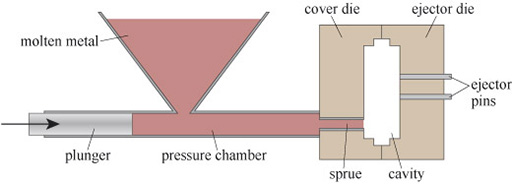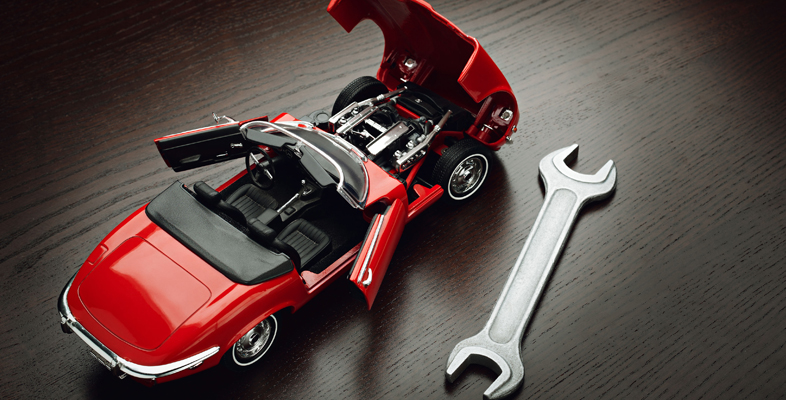2.2 The introduction of die-cast toys
Die-casting is a mass production process often used for metal processing. Typically, a molten metal is injected under high pressure into the cavity of a steel mould where it solidifies into its final shape. The steel mould is made of at least two parts which can be separated to release the cast product as shown in Figure 10. In many ways, die-casting is similar to the plastic injection moulding that was used to manufacture the LEGO®.

As the injection system and the die (mould) are both made of steel, most die-cast products are made from metals with lower melting points such as zinc, copper, aluminium, magnesium, lead and their alloys. Production of die-cast toys started early in the twentieth century. The majority of die-cast toys are made from zamak, which is a zinc alloy containing small amounts of aluminium and copper.
An attractive feature of die-cast toy production is the ability to produce highly detailed precision models, as compared to those made from wood, plastic and sheet steel. Figure 11 shows the level of detail that can be integrated into metallic die-cast models, especially when several different cast components are assembled together. Regardless of the level of detail and precision, die-cast toys are more durable than hollow-structure toys made of steel sheets or plastic.

